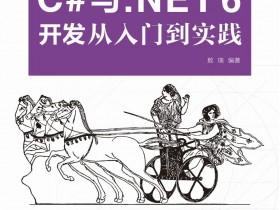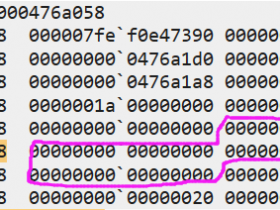- A+
前言
本来因为懒不想写这篇文章,但是不少人表示有兴趣,于是最后决定还是写一下。
.NET 6 最近几个预览版一直都在开发体验(如 hot reload、linker 等)、平台支持(如 Android、iOS 等)、工具链(如 crossgen2、PGO 工具和 wasm 的 AOT 等)、JIT(如 LSRA、Jump threading、PGO 和 guarded devirtualization 以及使 struct 保持在寄存器上等)、GC(如 Regions 等)以及 BCL(如 TimeOnly、DateOnly 以及 Json DOM 等)方面做改进,然而却一直没有公布 C# 10 的任何内容,即使在 Build 2021 大会上也没有提及这方面内容。然而实际上不少特性的实现已经接近尾声了,那么让我们提前来看看 C# 10 可以为我们带来什么东西。
当然,不是所有下面列出的特性都一定会进入 C# 10,也可能会和本文有所出入,我在每一个特性后面加了一个百分比表示最终实装的可能性,仅供参考。
Backing Fields(60%)
相信不少人在编写属性的时候,因为自动属性不能满足自己的需求于是不得不改回手动实现属性,这个时候总是会想“如果能不用手动写字段的定义就好了”,现在这个梦想成真了:
private int myInt; public int MyInt { get => myInt; set => myInt = value; } C# 10 中新增了一个 field,当使用它时会自动为属性创建字段定义,不需要再手动定义字段了,因此也叫做半自动属性。
public int MyInt { get => field; set => field = value; } Record Structs(100%)
Records 此前只支持 class,但是现在同样支持 struct 啦,于是你可以定义值类型的 record,避免不必要的堆内存分配:
record struct Point(int X, int Y); with on Anonymous Objects(80%)
此前 with 只能配合 records 使用,但是现在它被扩展到了匿名对象上,你可以通过 with 来创建匿名对象的副本并且修改它的值啦:
var foo = new { A = 1, B = "test", C = 4.4 }; var bar = foo with { A = 3 }; Console.WriteLine((bar.A, bar.B, bar.C)); // (3, test, 4.4) Global Usings(80%)
此前 using 语句的生效范围是单个文件的,如果你想使用一些 namespace,或者定义一系列的类型别名在整个项目内使用,那么你就需要这样:
using System.Linq; using static System.Math; using i32 = System.Int32; using i64 = System.Int64; 然后在每个文件中重复一遍。但是现在不需要了,你可以定义全局的 using 了:
global using System.Linq; global using static System.Math; global using i32 = System.Int32; global using i64 = System.Int64; 然后在整个项目中就都可以用了。
File Scoped Namespace(90%)
C# 10 开始你将能够在文件顶部指定该文件的 namespace,而不需要写一个 namespace 然后把其他代码都嵌套在大括号里面,毕竟绝大多数情况下,我们在写代码时一个文件里确实只会写一个 namespace,这样可以减少一层嵌套也是很不错的:
namespace MyProject; class MyClass { // ... } 如果采用这样的写法,每一个文件将只能声明一个 namespace。
Constant Interpolated String(100%)
顾名思义,常量字符串插值:
const string a = "foo"; const string b = $"{a}_bar"; // foo_bar 常量字符串插值将在编译时完成。
Lambda Improvements(100%)
C# 10 大幅度改进了 lambda,扩展了使用场景,并改进了一系列的推导,提出自然委托类型,还函数上升至 first-class。
支持 Attributes
f = [Foo] (x) => x; // 给 lambda 设置 f = [return: Foo] (x) => x; // 给 lambda 返回值设置 f = ([Foo] x) => x; // 给 lambda 参数设置 支持显示指定返回值类型
此前 C# 的 lambda 返回值类型靠推导,C# 10 开始允许在参数列表最前面显示指定 lambda 类型了:
f = int () => 4; 支持 ref 等修饰
f = ref int (ref int x) => ref x; // 返回一个参数的引用 First-class Functions
方法可以被隐式转换到 Delegate,使得函数上升至 first-class。
Delegate f = 1.GetHashCode; // Func<int> object g = 2.ToString; // object(Func<string>) var s = (int x) => x; // Func<int, int> 将函数作为变量,然后传给另一个函数的参数:
void Foo(Func<int> f) { Console.WriteLine(f()); } int Bar() { return 5; } var baz = Bar; Foo(baz); Natural Delegate Types
lambda 现在会自动创建自然委托类型。
可以用 var 来创建委托了:
var f = () => 1; // Func<int> var g = string (int x, string y) => $"{y}{x}"; // Func<int, string, string> var g = "test".GetHashCode; // Func<int> 调用 lambdas
得益于上述改进,创建的类型明确的 lambda 可以直接调用了。
var zero = ((int x) => x)(0); // 0 Caller Expression Attribute(80%)
现在,CallerArgumentExpression 这个 attribute 终于有用了。借助这个 attribute,编译器会自动填充调用参数的表达式字符串,例如:
void Foo(int value, [CallerArgumentExpression("value")] string? expression = null) { Console.WriteLine(expression + " " + value); } 当你这样调用时:
Foo(4 + 5); 会输出 4 + 5 = 9。这对测试极其有用,因为你可以输出 assert 的原表达式了:
static void Assert(bool value, [CallerArgumentExpression("value")] string? expr = null) { if (!value) throw new AssertFailureException(expr); } default 支持解构(100%)
default 现在支持解构了,因此可以给 tuples 直接赋值。
(int a, int b, int c) = default; // (0, 0, 0) List Patterns(100%)
Pattern Matching 的最后一块版图:list patterns,终于补齐了。
void Foo(List<int> list) { switch (list) { case [4]: Console.WriteLine("长度为 4"); break; case { 1, 2, 3 }: Console.WriteLine("元素是 1, 2, 3"); break; case { 1, 2, ..var x, 5 }: Console.WriteLine($"前两个元素是 1, 2,最后一个元素是 5,倒数第二个元素是 {x}"); break; default: Console.WriteLine("其他"); } } 同样的,该 pattern 也是 recursive 的,因此你可以嵌套其他 patterns。
除了上述 switch statements 的用法,在 if 以及 switch expressions 等地方也同样可用,例如:
void Foo(List<int> list) { var result = list switch { [4] => ..., { 1, 2, 3 } => ..., { 1, 2, ..var x, 5 } => ..., _ => ... }; } Abstract Static Member in Interfaces(100%)
C# 10 中,接口可以声明抽象静态成员了,.NET 的类型系统正式具备 virtual static dispatch 能力。
例如,你想定义一个可加而且有零的接口 IMonoid:
interface IMonoid<T> where T : IMonoid<T> { abstract static T Zero { get; } abstract static T operator+(T l, T r); } 然后可以对其进行实现,例如这里的 MyInt:
public class MyInt : IMonoid<MyInt> { public MyInt(int val) { Value = val; } public static MyInt Zero { get; } = new MyInt(0); public static MyInt operator+(MyInt l, MyInt r) => new MyInt(l.Value + r.Value); public int Value { get; } } 然后就能写出一个方法对 IMoniod<T> 进行求和了,这里为了方便写成扩展方法:
public static class IMonoidExtensions { public static T Sum<T>(this IEnumerable<T> t) where T : IMonoid<T> { var result = T.Zero; foreach (var i in t) result += i; return result; } } 最后调用:
List<MyInt> list = new() { new(1), new(2), new(3) }; Console.WriteLine(list.Sum().Value); // 6 这个特性同样也会对 .NET BCL 做出改进,会新增诸如 IAddable<T>、INumeric<T> 的接口,并为适用的已有类型实现。
总结
以上就是在 C# 10 的大部分新特性介绍了,虽然不保证最终效果和本文效果一致,但是也能看到一个大概的方向。
从 interface 的改进上我们可以看到一个好的预兆:.NET 终于开始动类型系统了。2008 年至今几乎没有变过的 CTS 显然逐渐不能适应语言发展的需要,而 .NET 团队也明确给出了信息表明要在 C# 11 前后对类型系统集中进行改进,现在只是一个开始,相信不久之后也将能看到 traits、union types、bottom types 和 HKT 等的实装。




